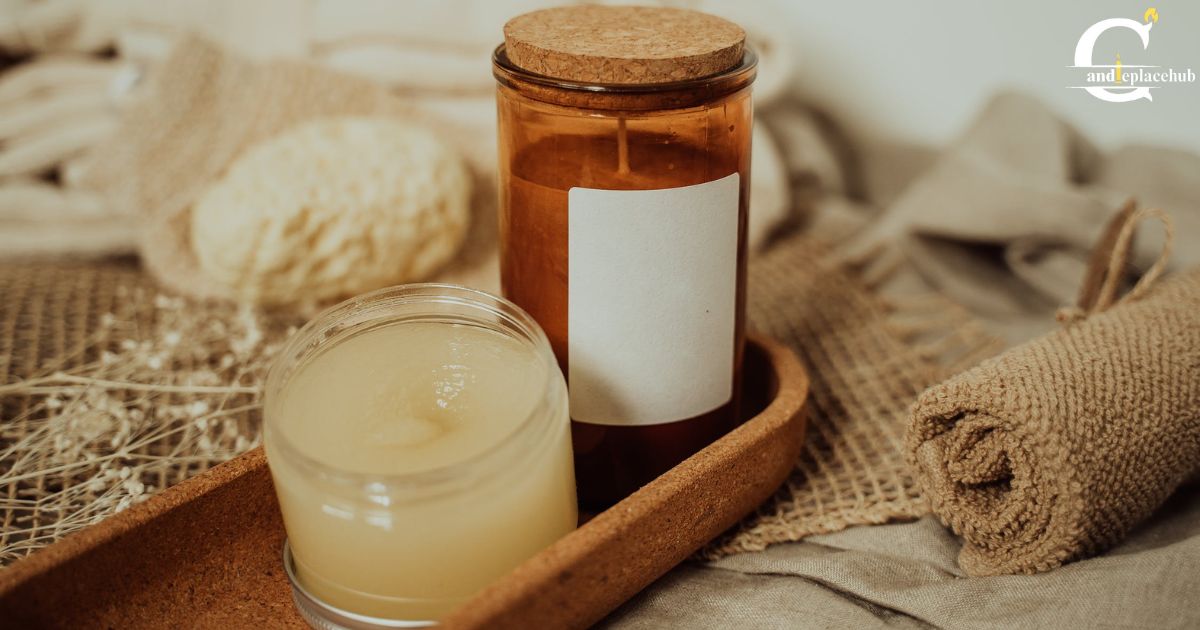Curing candles means letting them rest and settle after they are made. It helps the wax and fragrance blend together nicely. During curing candles develop a stronger scent and burn better.
Candles are like magic when it’s glow and flicker. There’s a little secret to making them even more special. “Do You Cure Candles With Lids On Or Off?” The answer depends on personal preference and the type of scent you desire. Some say leaving lids off lets fragrances circulate better while others believe lids help retain the scent. Experiment with both methods to find what works best for you. It is your candle journey so enjoy the process and learn the perfect way to cure your candles.
We looked into cure candles with lids on or off by doing a lot of research. We learned important things we want to tell you about. Our aim is to give you complete and helpful information that’s both easy to understand and right for people who like making candles.
The Curing Process

It is important to understand what curing means when we talk about making candles. Cure candles is a critical step that refers to the period of time a candle needs to rest after it has been created and before it is burned. This waiting period allows the candle to settle and develop its final characteristics.
Imagine making a delicious soup. You know it tastes even better the next day because all the flavors have had time to blend. Similarly curing in candle making lets the ingredients wax, fragrance etc. meld together enhancing the overall quality of the candle.
What is the Purpose of Curing?
Enhancing Fragrance: One main purpose of curing is to allow the fragrance to fully integrate with the wax. This results in a more potent and longer lasting scent when the candle is eventually burned. It is like marinating meat to make it tastier the longer it sits the better it becomes.
Stabilizing Wax: Curing also helps the wax cool and solidify uniformly. This is important for the candles structure and ensures that it burns evenly.
Factors Influencing Curing Time and Effectiveness
- Type of Wax: Different waxes require varying cure candles times. Soy wax for example might need a longer curing period than paraffin.
- Fragrance Concentration: The amount of fragrance added to the wax influences curing time. Higher concentrations may need a longer curing period for the scent to fully integrate.
- Candle Size and Shape: Larger or uniquely shaped candles might need extended curing times as the core takes longer to cool.
- Environmental Conditions: Factors like temperature and humidity can affect curing. Warmer environments often speed up the process while cooler conditions might require more time.
Curing with Lids On

Curing candles with lids on involves keeping the lids securely in place during the post pouring process. This method has its own set of advantages and disadvantages that provide to specific needs in candle making.
| Advantages | Disadvantages |
| Retaining Fragrance: When you cure candles with lids on the fragrance used in the candle making process is more likely to be retained within the candle. The lid acts as a barrier preventing the scent from escaping into the surroundings. | Potential for Uneven Cooling: Cure candles with lids on may lead to uneven cooling. The surrounded environment created by the lid can cause certain areas of the candle to cool more slowly than others. This can result in uneven surfaces or even structural issues. |
| Protection from Dust and Contaminants: The lid provides a protective shield protection the surface of the candle from dust, debris or any unwanted particles that might settle on the candle while it is still in the curing phase. | Delayed Release of Fragrance: While retaining fragrance is an advantage it comes at the cost of a delayed release. Candles cured with lids on might take longer for their scent to fully originate once the candle is burned as the fragrance needs time to saturate through the candle. |
Curing with Lids Off

It is an essential step in the cure candles making process. It involves allowing the freshly poured candles to cool and settle before use. One method that sparks discussion between candle fans is curing with lids off. This approach involves leaving the candles exposed during the curing process without the protective shield of their lids. This method has its own set of advantages and disadvantages that provide to specific needs in candle making.
| Advantages | Disadvantages |
| Improved Air Circulation: When you cure candles with the lids off the air can circulate more freely around the candle. This is important because it helps the candle cool down more evenly. | Fragrance Loss: With lids off some of the beautiful scent from the candle might escape into the air. The fragrance is a bit like a delicate flower it can breeze away if there is too much breeze. So if you want your room to smell amazing you might lose a bit of that if you cure with the lids off. |
| Quicker Cooling Time: Without the lid the heat trapped inside the container can escape faster. These speeds up the cooling process. | Susceptibility to External Elements: Exposing candles to the environment without lids makes them more vulnerable to external elements like dust or other airborne particles. This could impact the visual appeal of the candle surface. |
Curing Candles With Or Without Lids?
If you are a beginner curing without lids might be easier. When you cure candles without lids air can circulate freely around them. This helps any excess moisture or scent escape making the candle better over time.
Using lids during curing has its advantages too. It can trap the fragrance and make the scent stronger. But for beginners it might be a bit trickier. You need to check the candles more often to make sure they’re drying and not getting too hot.
Once you become more skilled in making candles you can try out different things during the curing process. For example, you might want to test how using lids affects the scent or appearance of your candles. Professionals might experiment with making candles in various temperatures or using different types of lids to see what works best.
It is like being a candle scientist. Just remember to write down what you do and what happens so you can make even better candles next time.
General Guidelines for Cure Candles
It is a critical step to ensure they burn well and release their fragrance effectively. Here are some general guidelines to follow:
Firstly, patience is key. Allow your candles to cool and settle after the initial pouring and solidifying process. A standard timeframe for curing is about one to two weeks but this can vary based on the specific wax and fragrance used.
Secondly, find a cool, dark and well ventilated space for curing. Avoid direct sunlight as it can affect the color and scent of your candles. Suitable air circulation is critical to ensure that the curing process occurs uniformly.
Maintain consistency in your curing environment. Fluctuations in temperature and moisture can impact the final quality of your candles. Aim for a stable environment to achieve the best results.
Lastly, while it is tempting refrain it from lighting your candles during the curing process. This helps in preserving the fragrance and preventing any irregularities in burning.
Adjusting the Curing Process for Different Types of Candles
Different candles need different care during curing. Here is how you can do it based on the type of candles you are making:
Container Candles

If your candles are in jars or containers it is good to keep the lids on while they cure. This holds the smell inside better. You can use different types of candle jars for make multiple candle shapes. Put them in a cool, dark place and maybe wait a bit longer than usual to get a stronger scent.
Pillar Candles

Pillar candles like to have the lids off during curing. This helps the air move around them better making sure they cool evenly. Keep them in a steady cool place while they rest.
Scented Candles

For candles with strong scents you can try a mix of both. Keep the lids on to save the smell but if it’s not strong enough take the lids off for a bit during curing. Find the balance that works for your scent.
Decorative Candles

Candles that look special might need some extra attention. If you use lids make sure they don’t mess up the designs on your candles.
How Long Do Candles Need to Cure?
The curing time varies depending on the type of candle and the materials used. Here is a breakdown of how long different types of candles need to cure.
| Wax Type | Container Candles | Pillar Candles | Scented Candles | Decorative Candles |
| Paraffin | 24-48 hours | 48-72 hours | 24-48 hours | 24-48 hours |
| Soy | 24-48 hours | 48-72 hours | 24-48 hours | 24-48 hours |
| Beeswax | 24-48 hours | 48-72 hours | 24-48 hours | 24-48 hours |
| Palm | 24-48 hours | 48-72 hours | 24-48 hours | 24-48 hours |
Common Mistakes to Avoid
Avoiding common mistakes is essential to ensure your candles turn out beautiful, fragrant and safe. Here are some key things to watch out for:
Choosing the Wrong Wax
Choosing the right wax for your candles is really important. It is like the foundation of your candle. If you pick the wrong one it can cause a lot of problems like affecting how the candle smells, how long it burns and the overall quality of the candle. So when you use beeswax candles you get a nice smell, a longer burning time and an overall better candle.
Ignoring Proper Measurement
Precision is key in candle making. Neglecting accurate measurements in your ingredients can throw off the delicate balance of your candle recipe and resulting in unpredictable outcomes during the crafting process and the burning phase.
Neglecting Wick Selection
The wick might seem like a small component but it plays a critical role in how your candle burns. Choosing the wrong wick can lead to issues such as uneven burning, tunneling or unnecessary dust impacting both aesthetics and performance.
Frequently Asked Questions
Should you put the lid on a candle?
It is a good idea to put the lid on a candle when you are not using it. This helps keep dust and dirt away and it also preserves the fragrance of scented candles. The lid protects the candle and makes it last longer.
How do you store candles while they cure?
Cure candles it means they are setting and hardening. It is best to store them in a cool, dry place away from direct sunlight. Make sure they are standing upright so they keep their shape. If the candles are scented storing them in a closed container can help the fragrance last longer.
Should you put the lid back on a candle after blowing it out?
It is a good habit to put the lid back on a candle after blowing it out. This prevents dust from settling on the wax and helps keep the candle clean for the next use. It also traps the remaining scent inside the container.
How to speed up candle curing time?
To speed up the curing time of a candle you can place it in the refrigerator for a short while. The cold temperature helps the wax harden more quickly. However avoid putting candles in the freezer as extreme cold can cause the wax to crack. Keep in mind that some candles may have specific curing instructions so it’s always a good idea to check the manufacturers recommendations.
Conclusion
Whether to curing candles with lids on or off depends on personal preferences and the type of wax used. Your question about ‘Do You Cure Candles With Lids On Or Off?’ is a common one between candle makers. If you are using paraffin wax it is generally recommended to cure candles with the lids off to allow for better fragrance throw. On the other hand soy wax candles may benefit from cure candles with lids on to preserve and enhance the scent.
Experimentation and observation are key to finding the best method for your specific candles. Keep in mind that cure candles is an important step in the candle making process as it allows the wax to fully set and the fragrance to develop. So whether lids on or off patience during the curing process will lead to better quality candles with a more strong and enjoyable scent.

Hi there! I’m Harrison Ford, a candle fanatic with 8 years of experience. Explore my website to discover the magic of candles through my passion filled journey, where I share tips, stories and everything you need to know about these glowing wonders.











